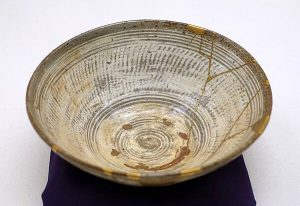Discovering the Turkish Underground
Or: Tuff Luck

The Turkish Underground
The Cappadocia region of Anatolia, Turkey, is riddled with underground cities. In 1963, a man in the region knocked down a wall of his home (for home renovations, I hope, though maybe he was just in a particularly bad mood) and discovered a mysterious room built into the rock.
After a little more digging, he broke into a whole intricate tunnel system: the Derinkuyu underground city, carved thousands of years ago.
The Cappadocia region sits on a one kilometer (3,300-foot) tall volcanic plateau. Millions of years ago, it was covered in volcanic ash, which solidified into tuff, a type of volcanic rock.
That made for easy digging, and the inhabitants of the region some 3,000 years ago quickly took advantage of this to dig their elaborate tunnel cities. (Not all tuffs are soft and easily dug into, however; some tuffs are extremely tough.)
People developed a wide range of uses within the tunnel systems. Food storage was one of the earliest and most reliable: cave systems tend to maintain constant temperatures, often considerably cooler than the surface.
We’ve also used underground cities multiple times throughout history to hide from attack. Derinkuyu is extensive enough that it could have hidden as many as 20,000 people. They had the benefit of ample storage space, which included wine and oil presses, stables, refectories, and chapels.
The city contains five different levels, each of which could be closed off independently of the others. Not least incredibly, the Derinkuyu is also connected to the Kaymakli underground city by an 8 km (5 mile) underground tunnel.
There is some debate about who first built the cities. Some attribute them to the Hittites (between the 15th and 12th centuries BC), but most believe they were constructed by the Phrygians (between the 8th and 7th century BC), the people who supplanted the Hittites, and then themselves faded away during Roman times.
The Derinkuyu was used by the Byzantines much later to defend themselves during the Arab Byzantine wars (780-1180 AD). Even as late as the early 20th century, the tunnels were still in use by the locals to avoid Ottoman persecution, only falling into disuse in 1923. So, doing our math, the lost city had only been lost for 40 years when it was re-found.
Today, much of the Derinkuyu underground city is open for visitation by tourists. And more than 200 other underground cities with a minimum of two levels (40 have three or more) have been discovered in the region.
Modern Problems: Balinese Rice
Meet the New Boss, Not as Good as the Old Boss

Sometimes . . . The Rice Rules
There’s a long list of stories in history where Europeans tried, and miserably failed, to apply European farming techniques to other places around the world.
It turns out that you need to adapt your techniques to your environment, not the other way around. The Ancient Greeks had a relevant term: metis, or local knowledge. It’s important to know how things work where you live.
One of the most interesting European agricultural failures occurred in Bali. The Balinese had, over millennia, developed incredibly complex rice farming techniques. Rice is absolutely central to Balinese Hinduism and cuisine. Rice is so important that the Bali word for rice, nasi, means “food.”
Incredibly complex water terraces cover Bali, running up and down hillsides, with equally complex irrigation systems all over the place. They have farming cooperatives known as subaks that consist of every farmer sharing a water source. Everything is orchestrated by the intricate and complicated calendar known as the tika. And, thanks to all of that, Bali was able to maintain an immense population density.

Yours truly, about to order a rice dish.
Then the Europeans came along, decided all of these old methods were nonsense, and decided to replace them with more modern techniques. They failed to significantly change anything.
After Indonesia gained independence, the Indonesians, in an effort to modernize, began applying those same European techniques in Bali. The water districts quickly fell into mismanagement: the new rice strains they’d introduced were more vulnerable to pests, and uniform rice crops were more vulnerable to disease, etc., etc.
In the 1980s, scientists began actually modeling the differences between the old and new systems and realized exactly how brilliantly adapted the old systems had been to Bali’s climate and ecosystem. Today, Bali has slowly reintroduced modified versions of the old system back in place. They’re not bringing back the old rice strains, but they’re reworking things to run off the tika calendar again.
It pays to understand your environment. The real world always beats theories.
Crowdsourced Explorer
Or: Privatizing the Cosmos?

"Crowdsource me up, Scotty."
On August 12, 1978, the International Cometary Explorer (ICE) was launched into space on a heliocentric (sun-centered) orbit.
Originally launched as the International Sun/Earth Explorer 3, NASA intended ICE to investigate the solar wind and Earth's magnetic field. The unmanned probe finished that mission successfully and was then repurposed into being the first spacecraft to visit a comet. It was also the first spacecraft to maintain an orbit at the L1 Lagrange point.
So, ICE/ISEE-3 was a pretty big deal, NASA reluctantly cut contact in 1997. They made brief contact with it in 1999, just to check that it was still there. In 2008, as it happened, the probe was not only still there; the thing was still functioning. Then, in 2014, as ICE approached Earth again, NASA determined that the probe continued to function…and maybe it was possible to bring it back into operation.
NASA toyed with the idea briefly, but they ended up doing nothing (yes, it’s always easier to do nothing).
Then a remarkable thing happened: a group of interested scientists, engineers, and programmers began a grassroots attempt to bring the satellite back to life. With NASA's blessing and some assistance, they began their campaign to revive the probe.
They crowd-funded their expenses and actually began to acquire all the defunct, obsolete hardware they'd need reanimate the probe. On May 29th, the team successfully made contact with the probe.
Though they were able to fire the thrusters one time, mechanical issues prevented them from doing so again due to the loss of the nitrogen gas pressurizing the fuel tanks. They eventually lost contact on September 16th.
It seems unlikely that they'll ever regain contact. Yet this was an incredible milestone: theirs was the first crowd-sourced, crowd-funded, citizen-driven planetary space mission.
That's one heck of an achievement.
The Golden Repair
Making Lemonade: Pottery Version

Kintsugi Action Figure
When we break a vase or a bowl, most of the time we just throw it away. We might be upset about breaking Grandma Esmeralda’s keepsake, but it's still usually going in the trash.
On the rare occasions when we try to repair it (say, under orders from Grandma Esmeralda’s daughter), we do our best to make sure that the repairs are as inconspicuous as possible.
In Japan, however, they do the complete opposite.
When a piece of Japanese ceramics breaks, they actually seal it back together with precious metal—gold, silver, or a lacquer containing powdered gold. The result is that they emphasize the breaks.
The art is known as kintsugi, which comes from a combination of kin (golden) and tsugi (repair). The fundamental philosophy of kintsugi is one that treats breaks and repairs as part of the history and essence of an object, not merely a mistake to be hidden. It's also an embracing of imperfection, which—if you ask me (or Grandma Esmerelda’s daughter)—can oftentimes be a pretty healthy attitude.
One reason this might not be as present in the West? The greater role of plastic. We use plastic constantly, and, unlike just about everything else, plastic ages terribly.
Old wood, pottery, or metal ages into beautiful antiques, but old plastic? It just looks terrible. There's no reason not to treat plastic as disposable in this sense.
The situation goes well beyond that. We've got a general culture of disposability. The huge geographical size of America means we have no problems creating huge garbage dumps wherever we want. American consumer culture demands that we keep filling our homes with the cheap stuff.
Of course, Japan isn't completely blameless in this regard. They have plenty of cheap disposable stuff they also throw away. Disposable wooden chopsticks, or waribashi, are notable offenders, resulting in massive deforestation every year.
Still: kintsugi offers us an interesting pathway toward rethinking the way we deal with the objects in our lives.





